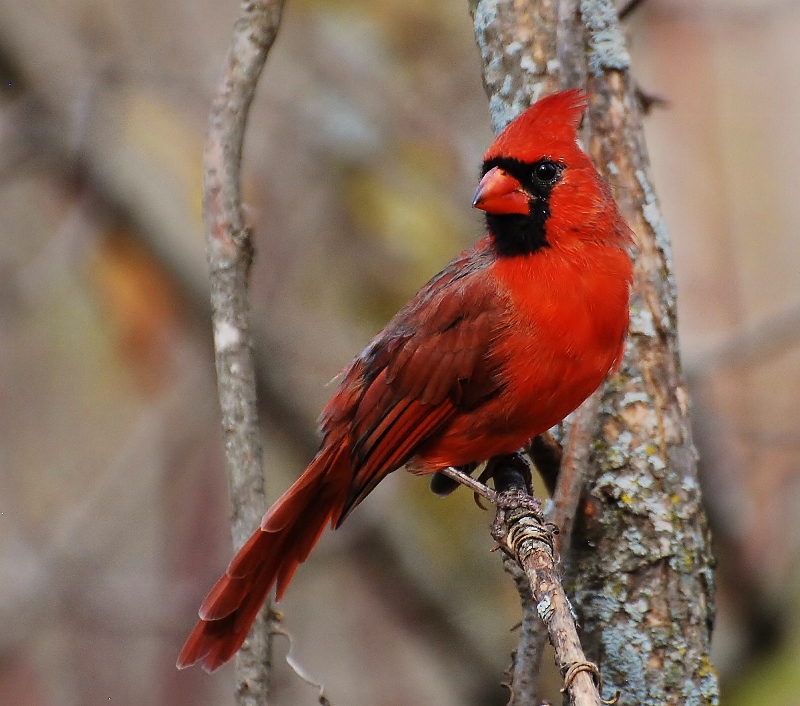 |
| (Photo from Wikipedia) |
Common name:
northern cardinal (en); cardeal (pt); cardinal rouge (fr); cardenal rojo (es); rotkardinal (de)
Taxonomy:
Order Passeriformes
Family Cardinalidae
Range:
This species is found throughout the eastern United States, as far west as Nebraska, eastern Colorado and Texas, also marginally into south-eastern Canada, in southern New Mexico and Arizona, and through Mexico down to northern Guatemala.
Size:
These birds are 20-23,5 cm long and have a wingspan of 25-31 cm. They weigh 35-65 g.
Habitat:
The northern cardinal is mostly found in scrublands, and also along the edges of temperate and tropical forests, in swamps and marshes, along rivers and streams and within urban areas. They are present from sea level up to an altitude of 2.500 m.
Diet:
They feed mainly on weed seeds, grains, berries and fruits, such as dogwood, wild grape, buckwheat, grasses, sedges, mulberry, hackberry, blackberry, sumac, tulip-tree, and corn. They also eat sunflower seeds, snails and a few insects such as beetles, cicadas and grasshoppers.
Breeding:
Northern cardinals are serially monogamous , although polygyny occurs sometimes. They breed in March-September. The female builds the nest, using materials collected by the male, consisting of a cup made of coarse twigs and sometimes bits of trash, covered in a leafy mat, and lined with grapevine bark, grasses, stems, rootlets, and pine needles. It is placed in a dense tangle of vines or scrubs, 1-3 m above the ground. There she lays 2-5 white to greenish eggs with pale grey or brown speckles, which she incubates alone for 11-13 days while being fed by the male. The chicks are fed by both parents and fledge 7-13 days after hatching, but continue to receive food from the parents for 4-8 weeks. Each pair can raise up to 4 broods per season, often with the female incubating one brood while the male is still tending the chicks from the previous brood.
Conservation:
IUCN status – LC (Least Concern)
This species has a very large breeding range and is generally common. The population has had a stable trend over the last 4 decades in North America.







